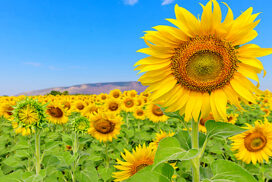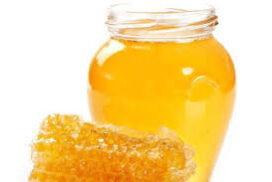Sagaing Region contributes 60 per cent of overall honey production, according to the Apiculture Division.
Myanmar ships 4,000 tonnes of honey to external markets and the remaining is supplied to domestic markets. There are nearly 900 beekeepers executing 200,000 beehives across the country. Myanmar’s annual honey production is estimated at nearly 6,000 tonnes, according to the regional Apiculture Division.
Myanmar’s honey is priced at $1,600 per tonne, according to the news released by the Ministry of Commerce.
“Myanmar’s honey is primarily delivered to China, Japan, Thailand, Singapore and South Korea. The officials are trying to connect to new trade partners in Europe,” said an official of the division.
Myanmar conveyed over 1,000 metric tons of honey to foreign trade partners in the six-month mini-budget period (2021-2022), generating an income of US$11 million, according to official statistics released by the Apiculture Division under the Livestock Breeding and Veterinary Department. The beekeepers practice migratory beekeeping, which is the seasonal transport of hives so that honeybees can pollinate plum, lychee, niger, sunflower, pigeon pea, rubber, monsoon sesame, corn and various vegetables in bloom.
Myanmar is one of the green list countries for honey exports to the European Union as Myanmar’s honey meets food safety criteria, according to the LBDV. Starting from 2007, Myanmar has been checking the residue of pesticide and other chemicals in honey under the National Chemical Residue Monitoring Programme. Moreover, 2 million acres of crops yearly contributes to bee pollination every year. This year, 11 per cent of sunflower sown acreage are designated for pollen sources this year.
“Myanmar has regular trade partner countries. Expansion of business is required to increase foreign income. Sagaing Region is the main producer of honey. Mon State also started engaging in honey production as well. Advanced beekeeping techniques should be adopted for higher honey production in the private sector as it could effectuate the development of the rural community,” said U Kyaw Kyaw Oo, in-charge of Apiculture Division.
Beekeeping business commenced in 1979 in Myanmar and Myanmar’s honey penetrated foreign market in 1985. Buyers prefer sunflower honey, palm honey and sesame honey. Of them, sunflower honey is highly demanded in the international markets. China is the biggest exporter of honey in the world and Viet Nam, Myanmar and Thailand are the largest producers among the regional countries.—Lu Lay/KK/GNLM
Sagaing Region accounts for 60 per cent of Myanmar’s honey production
- July 25, 2022
- 700














